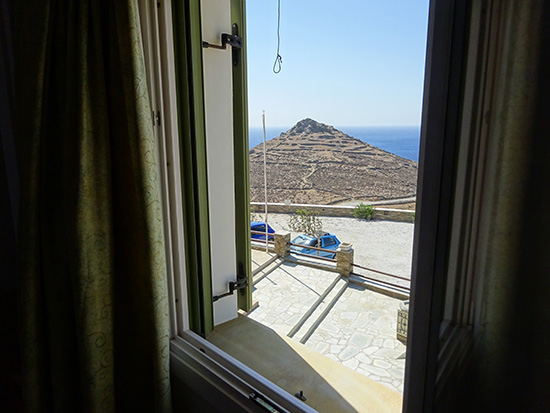
Stavros, Dean & Mike, and I spent a few days on Tinos last week, one of the larger islands in the Cyclades. Tinos isn’t on the radar for many non-Greeks, and perhaps because of this, the island feels somehow less corrupted by tourism. The Venetians controlled it until 1715, long after the rest of Greece had fallen to the Turks, and a legacy of the long Venetian presence is a mixed Catholic/Greek Orthodox population and elaborately designed dovecotes that dot the entire island. There’s a thriving marble folk art industry. Every door and window on the island has a carved marble transom, each house incorporating some marble decoration or detail.
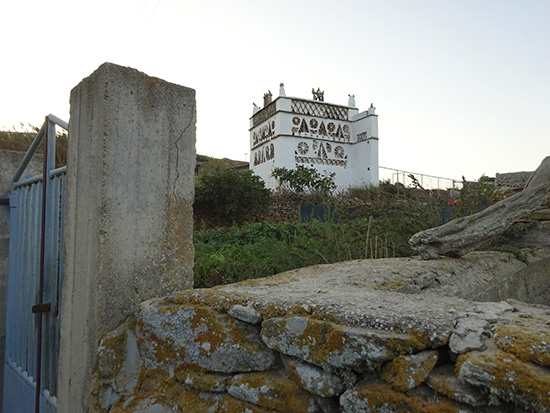
Most people make the pilgrimage to Tinos to visit the church of the Panagia Evangelistria, or Our Lady of Tinos. It was built on the spot where a miraculous icon with healing powers, thought to have been made by Luke the evangelist, was found in 1823. A few years earlier, Our Lady appeared to an elderly gentleman, telling him to wake up and dig up the icon. He told a local priest of his vision, but they both agreed that it may have been the devil in disguise, so best to proceed with caution. Mary kept appealing to this guy, disrupting his sleep to no avail. She finally moved on to a local nun who was a little more receptive to her directives, and bingo, she led some guys with shovels right to it. The icon was found the day after the creation of the modern Greek state, so Our Lady of Tinos was declared the patron saint of the emerging Greek nation, and the construction of the church was its first large architectural project.
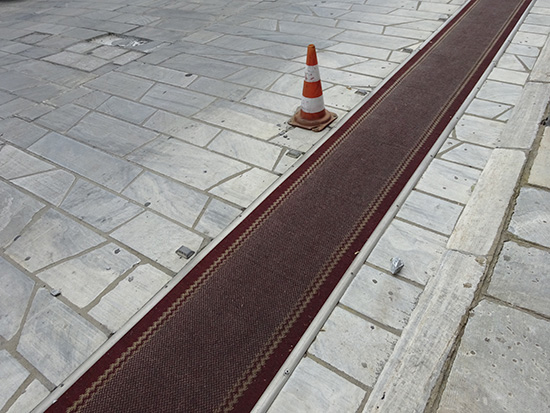
On the feast day of the Dormition of the Virgin (August 15), penitents crawl from the port up the hill to the church on their hands and knees as a sign of devotion, many seeking to be healed in some way. There are carpeted crawl-ways leading up the hill, and, at the top, a ghoulish statue of a crawling believer with outstretched arm and no face. It really freaked me out, the statue, reminding me of the Ghost of Christmas Future, the one who finally spooked Ebenezer Scrooge into buying that Christmas goose and new legs for Tiny Tim. The icon is displayed in the church under a mound of glittering jewels. I stood in line to photograph it, everyone in front of me kissing it and praying feverishly, but when I finally got there, I just sort of stared at it, not really able to comprehend what I was looking at, a mound of shiny baubles under glass. Beyond the reproduction icons and plastic holy-water bottles of the main town, ah, the magic begins. Great food, villages unspoiled by time, dramatic landscapes, fantastic beaches, charming little museums, and people living off of and sharing the bounty of the rugged landscape.
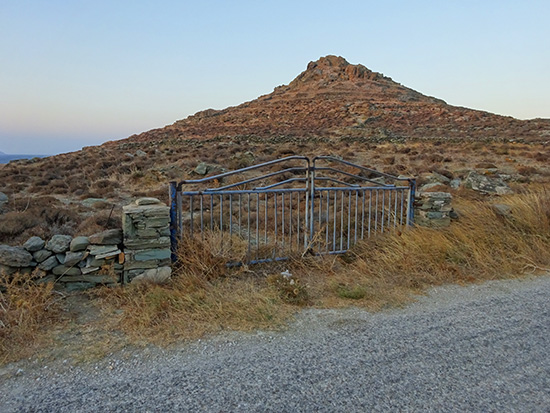
We stayed in an apartment overlooking the bronze-age acropolis of Vryokastro. Starvos and I ascended to the top of the acropolis early one morning, to see the sunrise, and got in the way of a humpy hunter chasing a cute little bunny, who seemed annoyed to see us in what was clearly his domain, shotgun shells strewn here and there along the path, his hounds barking and howling, just like a Bugs Bunny cartoon. I like to think that we saved a bunny that day.
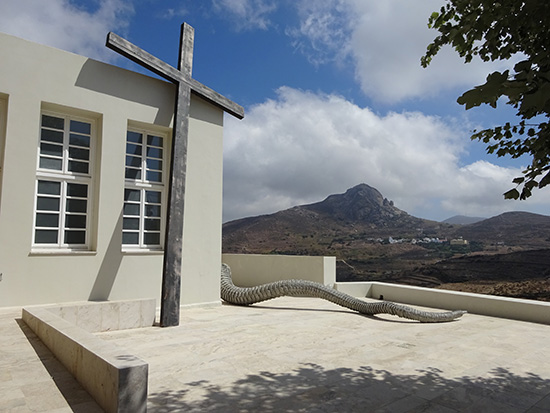
In Kambos is a museum devoted to the work of Costas Tsoclis, an artist who creates paintings and sculptures saturated in antiquity and nostalgia, and that often extend beyond their frames. Outside he’s created a fabulous and whimsical large-scale semi-abstract depiction of St. George slaying the dragon. Inside are several room-sized painting installations. The museum is so well designed, that even the bathroom window frames a poetic installation, a single cross leaning against a corner of the empty back courtyard, blue skies and a single cloud above. The only restaurant in town was run by a man named Stefanos, an older gentleman with a wide and toothless smile, who served up cuisine of ingredients entirely home grown, including these fantastic fried wild herb “horta” balls. We ate at his son’s restaurant in the main town a few nights later, and it was just as delicious.
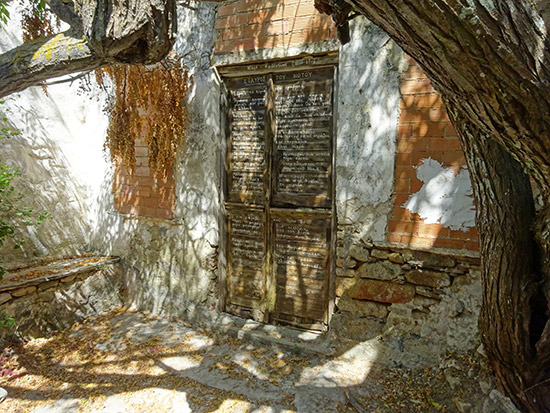
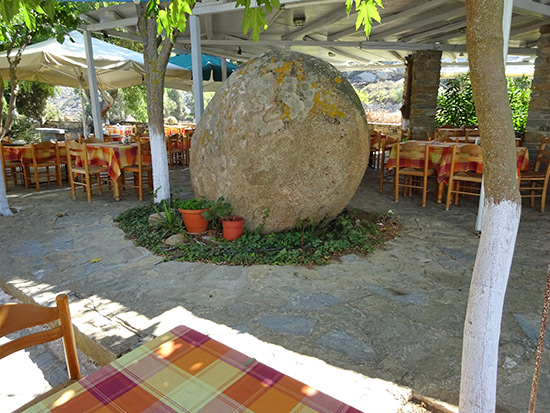
Driving north across the center of the island, we turned a corner and suddenly it seemed like we were on the moon. For as far as we could see, the entire landscape was filled with giant boulders, as if someone dumped a bag of giant rocks everywhere. In the center of this tremendous cyclopean rock-scape was a quaint village, Volax, with all of its houses built into, onto or around these massive stones. An artist covered the doors of vacant houses with handwritten transcriptions of various Greek poems, giving literal dimension to the weirdly poetic experience of the village.
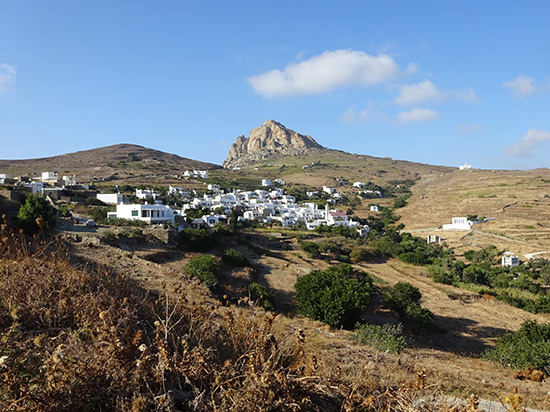
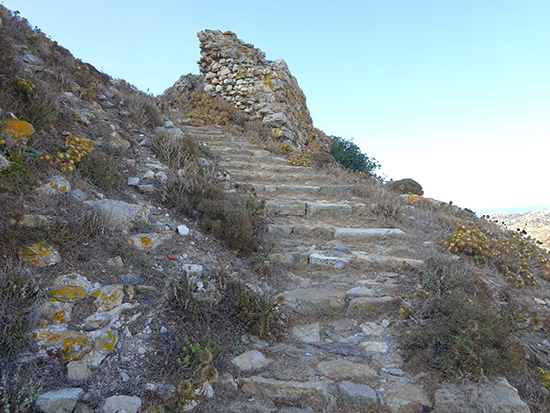
I climbed Mt. Exobourgo one day, site of a crumbling Venetian fortress, the administrative center of the island from the 13th to 18th centuries, while Stavros slept in the car. Standing for 500 years or so, the fortress and town inside were dismantled by the Turks in 3 days.
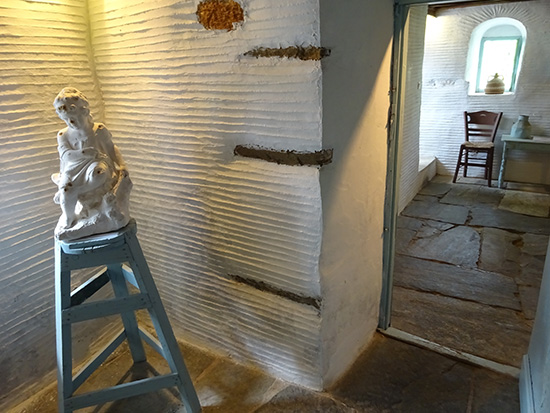
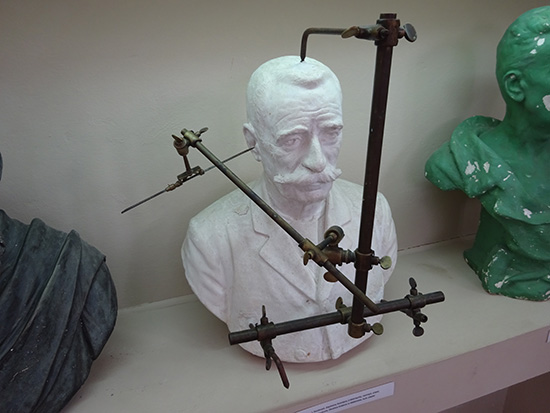
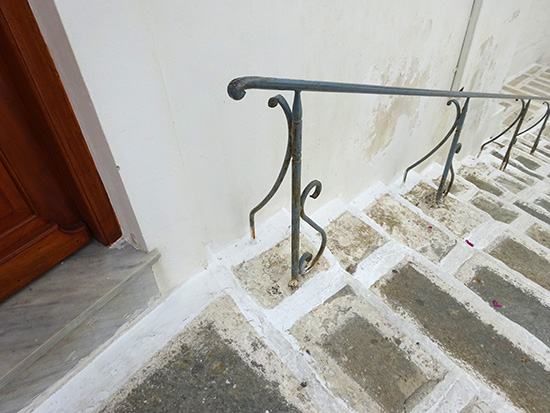
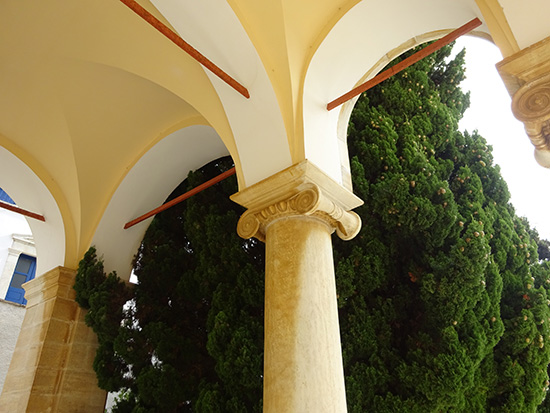
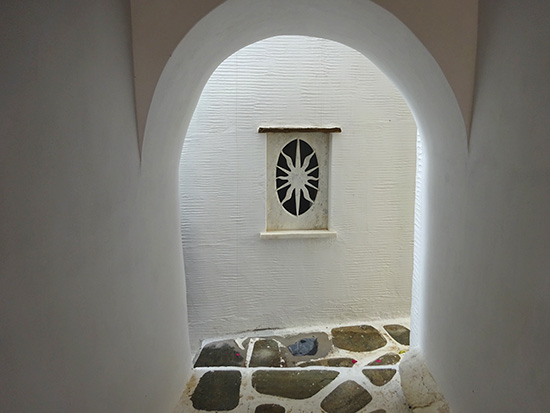
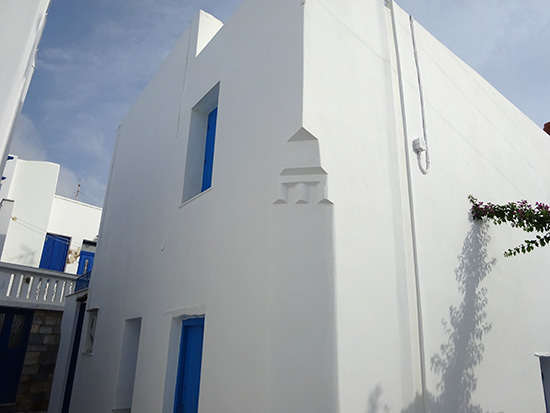
Pyrgos, on the north central side of the island, is one of the island’s largest villages, with several museums devoted to marble art and production. The houses and streets seem to be interconnected physically and visually, as if carved from a single block of marble. There are so many villages to tell you about, each with its own unique character, charm, and history, but enough already.
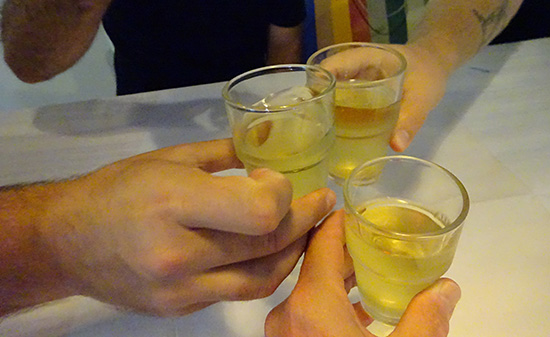
As I mentioned in my previous post, Stavros and I had decided the week before departing for Tinos to be just friends. Once on Tinos, we further decided to start seeing other people by seeing the same guy, and at the same time. His name means “sugar” in Greek, and he is as sweet as they come, a sort of furry Greek Mighty Mouse: short, muscular, carpeted in fine hairs, laughing and smiling. He’s married, to a woman, and has children, but he eagerly jumped into our four arms. He was tender, passionate, and talked to us for hours, so free with the details of his life on the island. I remember looking at Stavros across our Mighty Mouse sandwich and seeing someone different, someone I hadn’t seen before, my boyfriend being passionately engaged by someone else. I felt for a moment as if I were an intruder, but then Stavros looked into my eyes, kissed me, and suddenly I felt like we were celebrating not the end of something, but a new beginning. Remember Audrey Hepburn at the end of Roman Holiday, returning to her duties as a princess? On the plane now back to my life in San Francisco without Stavros, invoking Audrey when asked about my favorite island, I say “Tinos,” Tinos without hesitation, glassy-eyed and with memories that I’ll cherish forever.
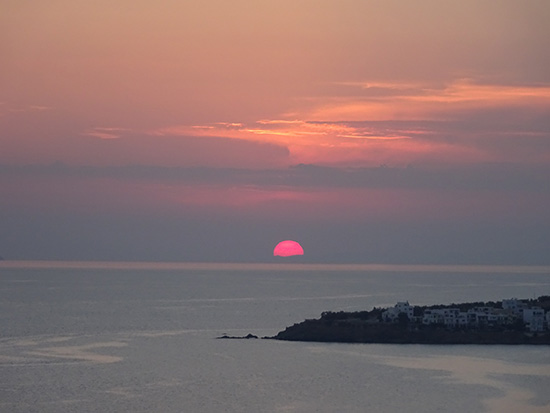
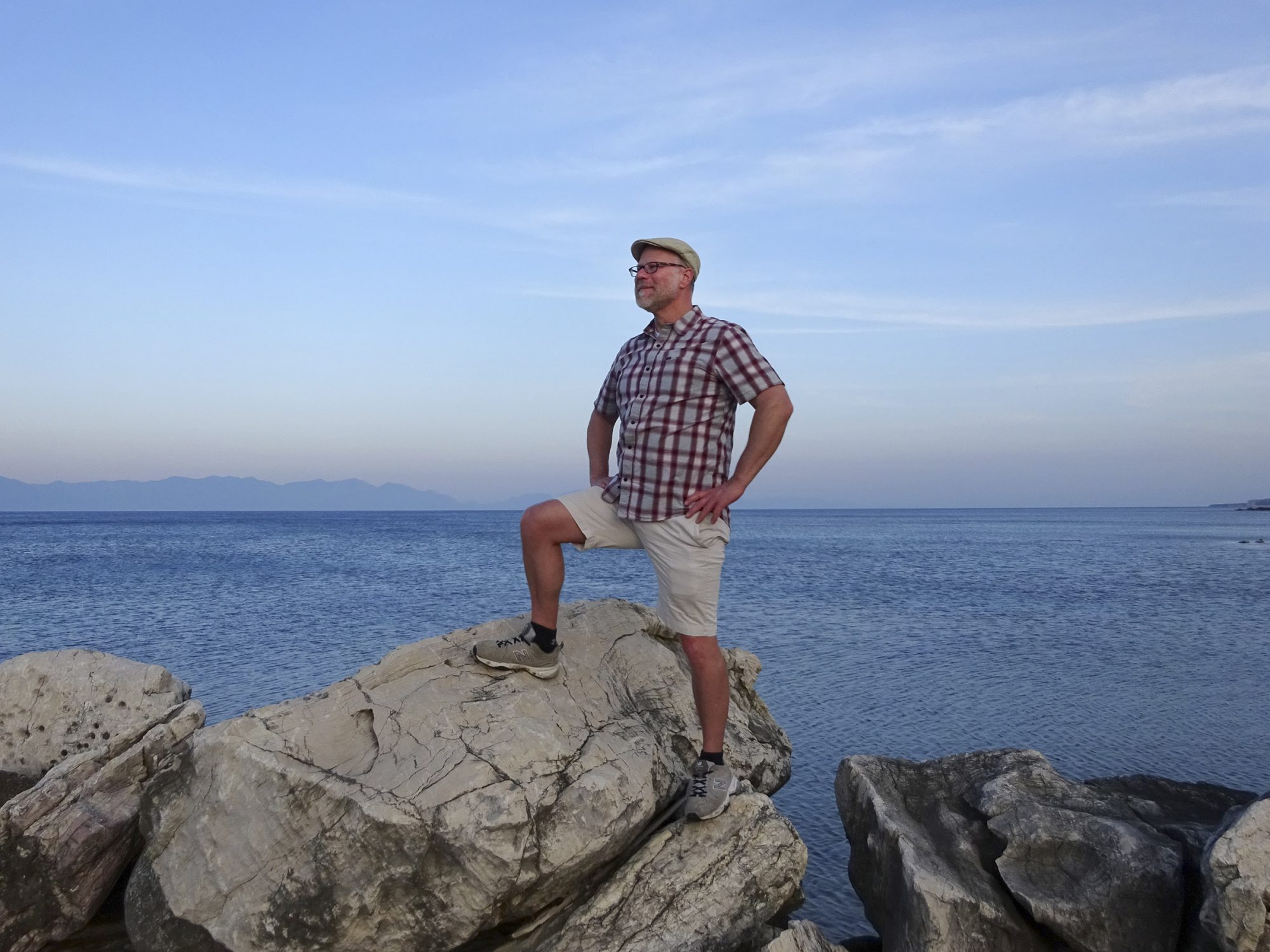
I found your blog by chance when looking for info about Greek islands. Admiring your pictures and writing, thank you! Also like your professional work. All the best to you.
Thank you, Anita. You’re perhaps the person I’ve been anxious about stumbling across my blog, someone looking for travel info and having to sift through my dating life 😉 Thank you for stopping by!